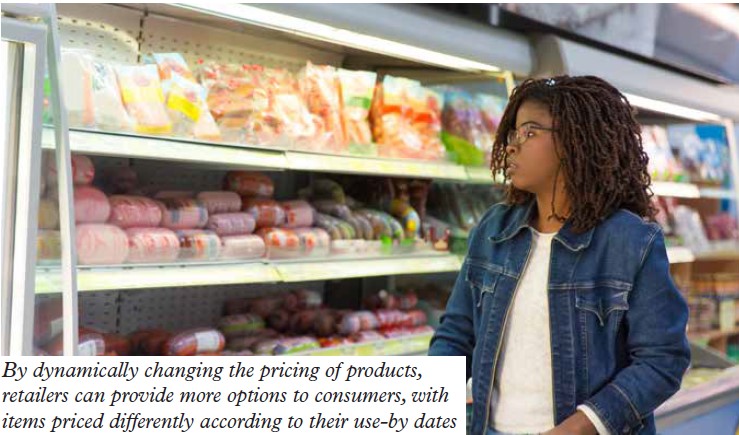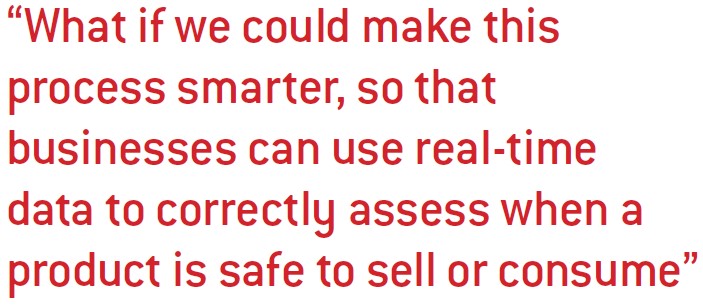Be smart to cut food waste

This often-referenced statistic from a 2011 Food and Agricultural Organization report rang alarm bells when it was published, but the situation has become even worse over the last decade. A recent World Wide Fund for Nature (WWF) report estimates that 1.2 billion tonnes of food produced globally is lost before it even leaves the farm. This means that as much as 2.5 billion tonnes is being wasted during the farm stage, contributing to a whopping 10 percent of global carbon emissions.
The WWF report shows that a major portion of global harvest stage losses come from high- and middle-income countries in North America, Europe, and the industrialized regions of Asia, despite these countries having higher on-farm mechanization and a third of the global population.
Considering the scale of the issue, a lot of effort is being put in to understand how technology and data can help reduce wastage along the farm-to-fork journey by giving stakeholders the data to make better decisions, using the often-overlooked ‘use by’ labels.
A significant portion of food wasted is safe to eat. In the UK, it is estimated that out of 9.5 million tonnes of food waste in 2018, over 6.4 million tonnes could have been eaten – roughly equal to over 15 billion meals. Unfortunately for both retailers and consumers, the only way of knowing whether an item is safe to use is by looking at the expiry dates on the package. These expiry dates are set by retailers based on hours of testing to determine the ‘safest’ best before date, and these estimates can be extremely conservative. According to WRAP (Waste and Resources Action Program), 8–11 percent of people mostly or entirely use the date label to choose whether to eat a food item. Supermarket staff also go by this information to decide when an item needs to be marked down or removed from the shelves. This continues to be a time-consuming process that has seen very little innovation since sell-by dates were introduced in the 1950s.
Smarter
What if we could make this process smarter, so that businesses can use real-time data to correctly assess when a product is safe to sell or consume? A simple way to do this would be by attaching scannable digital IDs on food products which can provide real-time information and item-level traceability along the distribution chain. By scanning these smart tags on food packaging, they will also be able to know in seconds when a whole shelf of products is nearing the ‘use by’ date without having to manually check each item, thereby saving thousands of employee hours and reducing wastage.
Going one step further, the packaging can also be embedded with smart sensors so that when supermarket staff or consumers scan the product, they will be able to gain real-time information on the quality of the product based on parameters such as moisture, humidity and smell.
Today distributors and retailers conduct destructive and non-destructive testing of food products to check for quality, which ends up providing a very conservative estimate based on existing statistics. This means that too often, food items go into the bin even when they are in good condition. This is a major issue within the meat industry, where wastage along the distribution line is a large contributor to carbon emissions. If we could eliminate the need for destructive testing and other forms of wastage using sensors, we can reduce the amount of meat produced, and thereby reduce the total amount of carbon emissions.
Alternatively, the price of an item can be locked to a digital scannable tag. By dynamically changing the pricing of products, retailers can provide more options to consumers, with items priced differently according to their use-by dates. This can help consumers use their grocery budget more efficiently. For example, if you know you are going to cook something tonight, you can pick a food item closer to the use-by date and save a little money in the process.
Implementing such solutions at scale will need close collaboration between packaging companies, food producers and technology companies to build traceability from farm to fork. At PragmatIC Semiconductor we are working to make this a reality using our ultra-low-cost flexible electronics technology, which allows for smart tags to be embedded on every item on the supermarket shelf. PragmatIC is part of SecQuAL, an innovative project running trials that aim to improve efficiency in supply chains and reduce food waste. The consortium is currently seeking leading UK retailers to participate in these trials to help improve food traceability.
The food industry is responsible for nearly 10 percent of global greenhouse gas emissions, but by optimizing manufacturing and supply chain processes using novel technology that is scalable and affordable, it is possible to deliver the significant reduction in carbon footprint needed. Considering the scale of the problem, we do not have a minute to lose.
Article written by Alastair Hanlon, chief commercial officer at PragmatIC Semiconductor.
Stay up to date
Subscribe to the free Label News newsletter and receive the latest content every week. We'll never share your email address.

